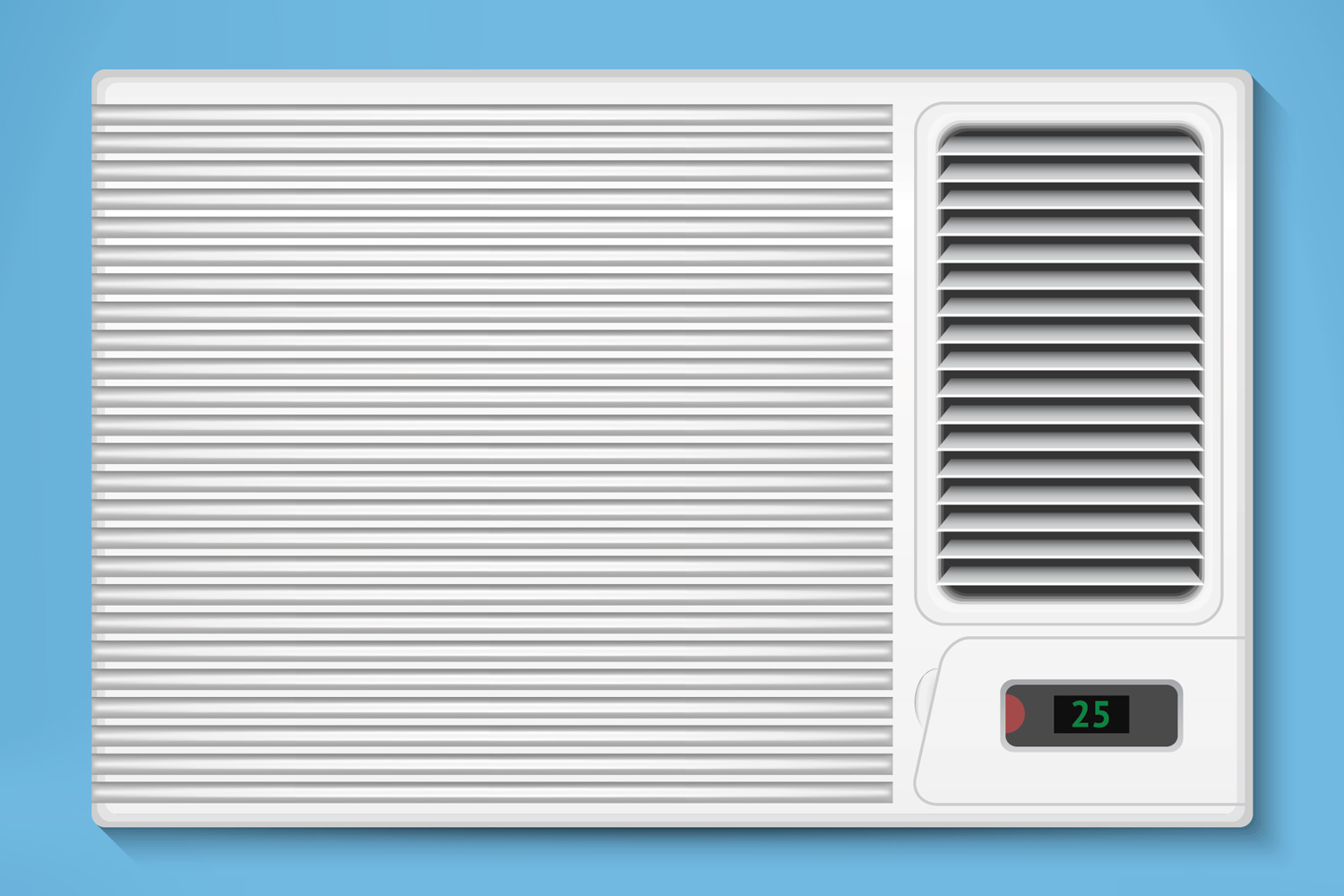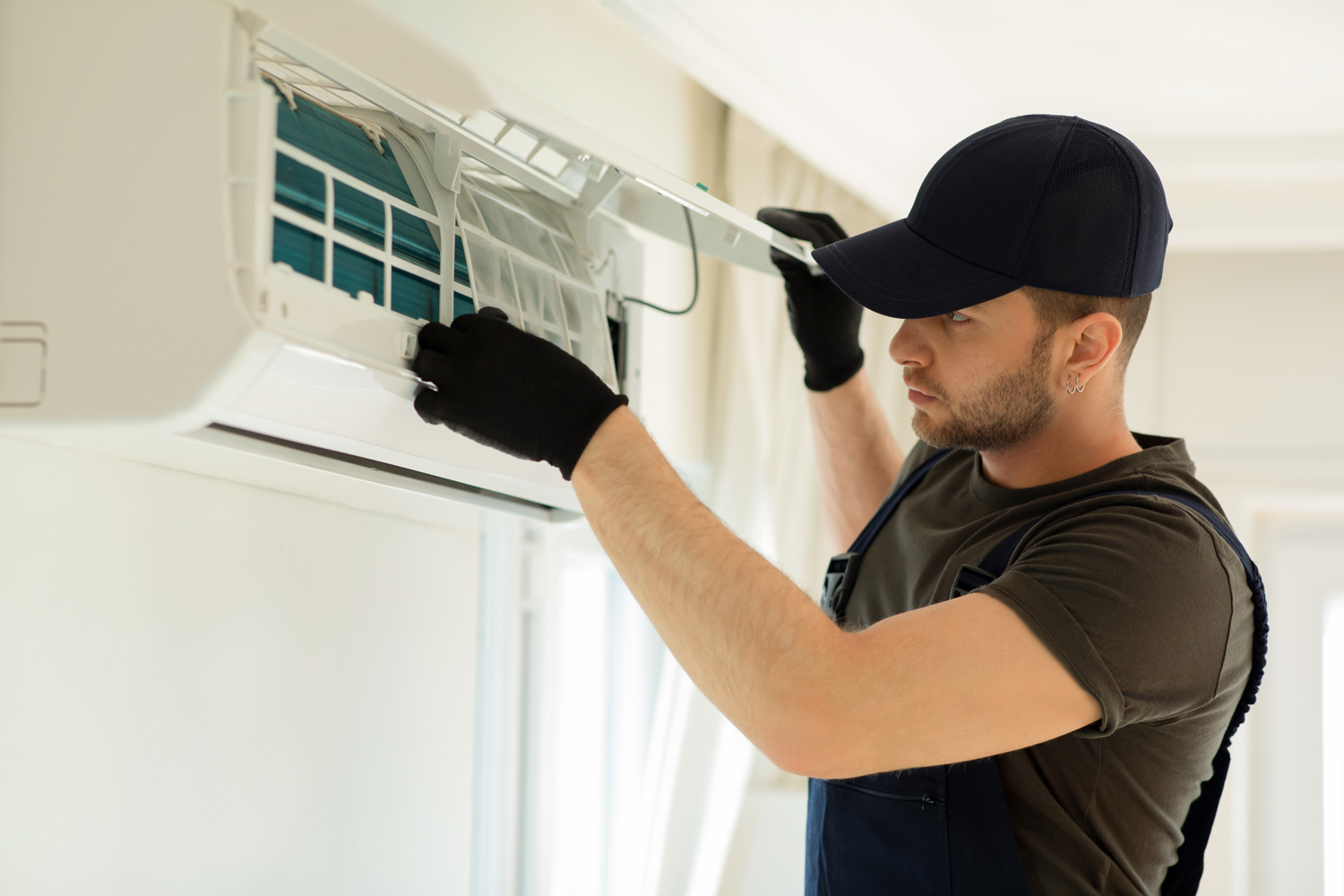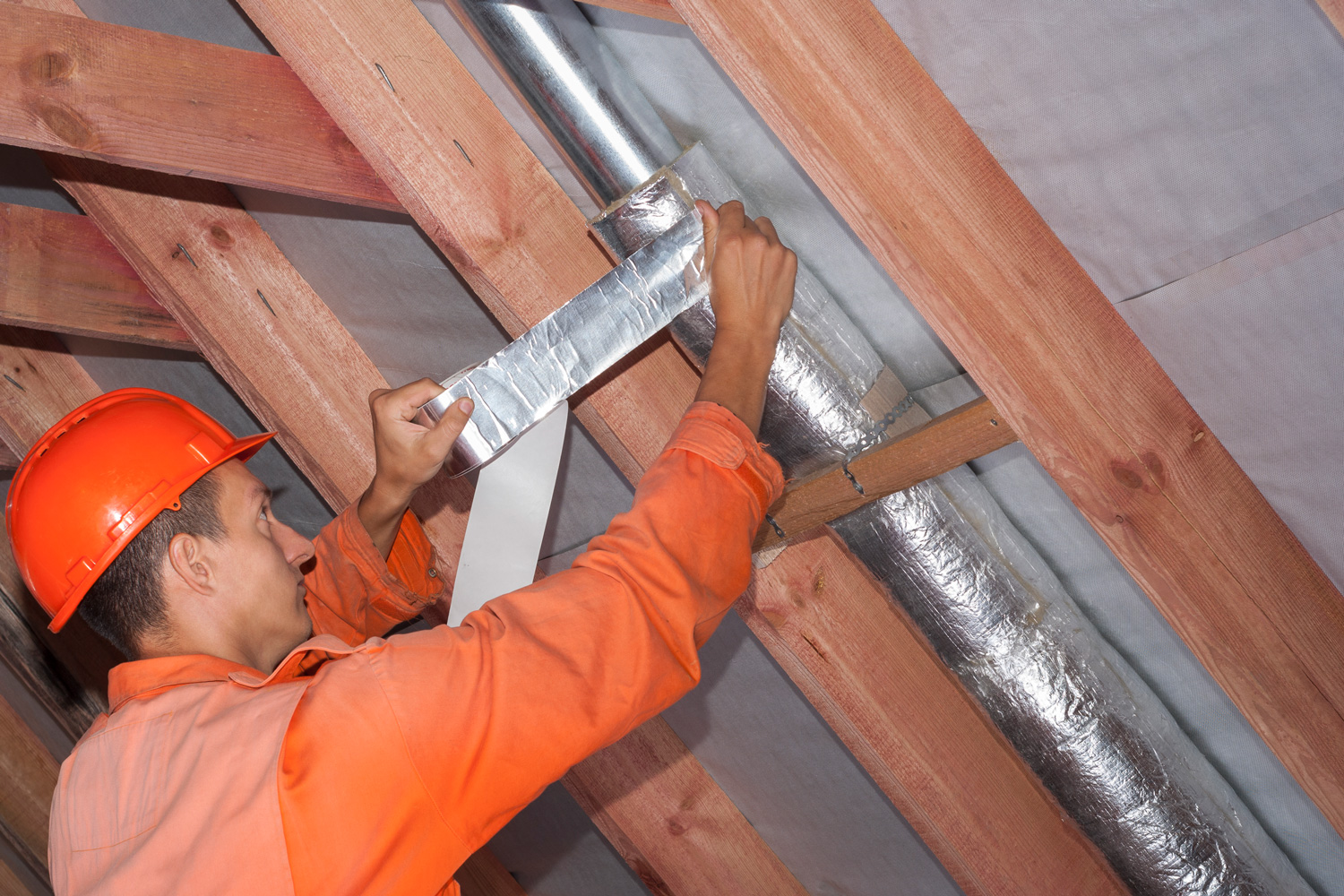If you have removed a wall-mounted air conditioning unit, you might still have a sizable hole in your wall.
While a hole in your home's wall might seem intimidating, it is relatively easy to cover up. We looked for suggestions on how to cover the AC hole in the wall.
To begin, gather the equipment and supplies needed to patch the hole. Experience with drywall or carpentry is advantageous but optional. A person with basic handyman abilities, the required equipment, and the materials on hand can typically complete the project in one full day.
The fundamental methods for covering an AC hole in a wall are as follows:
- Prepare materials.
- Remove the AC unit.
- Create a frame.
- Fill the inside gap.
- Add insulation.
- Patch up the outside hole.
Although filling a gap in the wall is relatively simple, you must be meticulous in your work. Continue reading to learn the specific steps for repairing an AC hole in the wall.
![window air conditioner in my room of general - How To Cover AC Hole In The Wall [Step By Step Guide]](https://hvacseer.com/wp-content/uploads/2022/11/window-air-conditioner-in-my-room-of-general-How-To-Cover-AC-Hole-In-The-Wall-Step-By-Step-Guide.png)
How To Close AC Hole In The Wall
The hole becomes strikingly visible as soon as you remove the AC from the wall. This unpleasant sight should not be left unattended; you should be able to fix it quickly. Here is a step-by-step guide for filling the AC hole in the wall.
1. Prepare Materials
You must set up the area and gather resources before starting work.
You will need the following equipment and materials to complete this project: hammer, nails, drywall, screws, drill, joint substance, tape for drywall, sticky knife, sandpaper, paint, insulation, plywood, and siding.
2. Remove The AC Unit
Once you take off the trim, you should be able to see the screws keeping the air conditioner in place.
It is necessary to remove the sealant, keeping the air conditioner and the wall firmly in position. As you pull this away, the air conditioner should start to loosen.
3. Create A Frame

After removing the AC unit, you'll need to build a frame that will fit inside the hole. Fasten the framework firmly to the interior, most likely visible wall studs.
After putting the structure in place, you can complete the task by drywalling over the hole.
4. Fill The Inside Gap
With a mixture of drywall adhesive and cement, you must start blending the two parts of the wall and smoothing them out.
Make sure the compound is dry before sanding and smoothing it off.
5. Add insulation
Before cutting a piece of plywood to cover the aperture, choose insulation that is adequate for your environment and climate.
Next, put the insulation from the exterior of the house.
6. Patch Up The Outside Hole
Once you set the insulation and plywood, you may start making sure the exterior wall looks excellent.
Then, check that the house's exterior and inside seem identical to before. You can use this to cover a wall-mounted AC hole.
How Much Does It Cost To Remove Through-The-Wall AC?
If you want to remove your in-wall air conditioner that needs, the cost will depend on a few factors, primarily the size, type, condition, and location of the AC unit.
Large units cost more than small units, same with standard and ductless units.
Removing a wall AC unit in poor condition is cheaper than removing one in poor condition. The cost of removal also depends on the location of your AC.
If the AC is difficult to reach, the price will be higher than in a more accessible position. The average hourly rate of in-wall AC removal is about $55 to $75.
What Is A Wall-Mounted AC?

Self-contained cooling devices are known as through-the-wall air conditioners mounted to the outer wall of a structure.
When fitted correctly, these devices improve efficiency by forming an airtight seal that extends from the inside wall surface to the outside.
Additionally, once installed, they only need to be taken out again once it needs to be serviced or replaced.
How To Replace A Wall-Mounted AC?
If your home has a through-the-wall air conditioner, you may eventually need to replace it. This type of AC unit is installed directly into an exterior wall, so replacing the AC can be a bit more challenging than replacing a window AC unit.
Here are the basic steps you'll need to follow to change your through-the-wall air conditioner:
1. Remove The Air Conditioning Unit
Typically, wall-mounted ACs are only removed when damaged and needing repair or replacement. To do this, you can remove the external framework, pull out the screws holding the unit, and then carefully pull it out of the wall.
Unfortunately, you won't be able to do this alone and should ask for help to safely and efficiently remove the unit.
2. Cut Off The Electricity
An AC must be unplugged from the power source when you remove the device. Otherwise, someone could be shocked.
Even disconnecting an AC before removing it might be dangerous since touching the "drainage" or "live" portion of the power cable could result in serious injuries.
You must finish the installation process before turning on the main electrical supply.
3. Install The New AC

Your through-the-wall unit should always be placed inside a frame because doing so will help sustain the heavy item.
Do not put the AC near a concrete wall because there could be problems with moisture and current passage. Do not push or force any part of the AC unit because doing so could cause it to break.
Carefully insert the replacement unit into the wall opening, then secure it with screws.
4. Seal The Gaps
After mounting the unit, fill up all the spaces with insulation or silicone caulk to keep moisture and hot air away from your air conditioner.
Make sure to patch the gaps properly.
5. Install The Outside Framework
Installing the AC case first, then inserting the AC chassis inside, is another acceptable and secure option.
Any forceful pushing or pulling of the unit may damage the components. Therefore, it is necessary to provide an AC case to prevent component damage.
How To Insulate An AC Hole

If you own an air conditioner, you know that one of the most crucial tasks is ensuring the machine is adequately insulated.
In particular, the location of the hole demonstrates this. Fortunately, there are several ways to seal the AC hole, such as:
Mineral wool
Insulation made of mineral wool frequently has a rectangular shape. When soundproofing a room, mineral wool insulation is kept in place by perforated metal sheets fastened to the wall.
In addition, mineral wool insulation can be utilized, just like fiberglass insulation, to muffle the sound of air conditioners when mounted on the inside surface of rigid ducts.
Check out this foil backing insulation wool on Amazon.
Spray Foam (Polyurethane)
Chilled water pipes use polyurethane as insulation. The panel of air handling units contains PU insulation as well.
In some applications, PU insulation is sprayed over concrete slabs to insulate the floor with ambient to freezing temperatures.
Most PU insulations for chilled water pipes are pre-insulated.
Check out this 2 part expanding polyurethane marine pour foam for boat flotation on Amazon.
Glass Fiber
For protection, the exterior surface of fiberglass insulation frequently has a coating of aluminum foil. The fiberglass insulation must be installed onto rigid metal ducts using adhesives or glue.
In contrast, fiberglass insulation is available in board form and different sizes. Usually, soundproofing a room involves mounting boards on the wall.
Fiberglass insulation is placed on the interior surface of rigid ducts to reduce AC noise.
Check out this fiberglass pipe-wrap insulation kit on Amazon.
Closed Cell
Drain and copper pipes used for air conditioning refrigerant frequently have closed-cell insulation. Many air conditioners and chillers utilize closed-cell insulation for their body.
Closed-cell insulation typically has a smoother surface and is squishy like sponges but is black.
Check out this closed-cell window insulation door seal tape on Amazon.
Polyethylene
The rigid duct in air conditioning systems uses polyethylene (PE) insulation. Ceiling cassettes and fan coils also use PE insulation on their bodies.
Closed-cell insulation comes in the form of PE insulation. However, PE insulation frequently has a gray and is available in roll form.
Before being hoisted and hung, rigid ducts are usually PE-insulated.
Check out this polyethylene foam tube insulation on Amazon.
Take Away
After removing your central air conditioner unit, you're left with a gaping hole in your wall. You must patch the chamber if you do not intend to replace the unit.
You can measure the hole and then build support to fit. Then, fasten the support using bolts or rivets.
Once the structure is connected, you can use a drywall compound to fill the hole. Let the joint compound dry before fixing the entire physique of the wall for uniformity.
If you find this post helpful, you can check other related posts:





